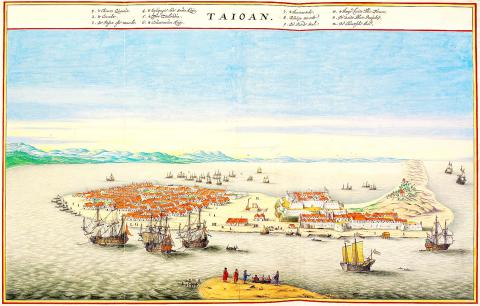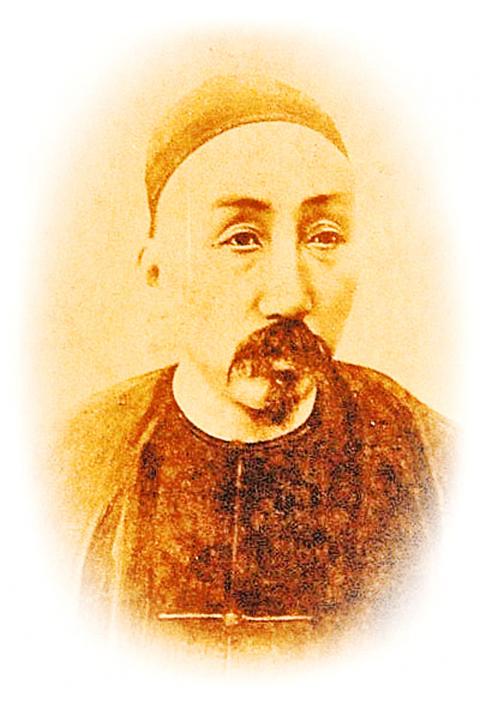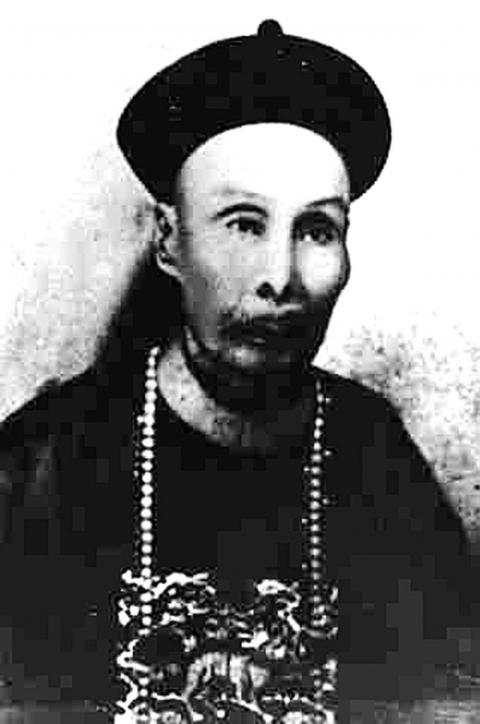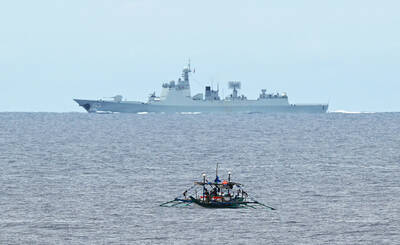Taiwan was once a province of China, but for only a brief period: 1887 to 1895, and the era laid the foundation for a separate identity in Taiwan.
Two hundred years earlier, in 1644, the Qing Dynasty under Manchu rule had come to power in Beijing, driving out the Ming Dynasty rulers. But at the time, Taiwan was under Dutch colonial rule through the Dutch United East India Company.
In April 1661, Ming warlord Cheng Cheng-kung (鄭成功, also known as Koxinga) — himself being on the run from the Qing invaders — crossed over to Taiwan with some 400 ships and 25,000 men, and after a nine-month siege of Zeelandia, a Dutch fortress in present-day Tainan, took control of the area.

Photo courtesy of Wikemedia Commons
The rule of Koxinga’s family didn’t last long: in 1683 his grandson, Cheng Ke-shuang (鄭克塽), was defeated in a battle on the outlying island of Penghu (the Pescadores) by the famed admiral Shih Lang (施琅), the first official to rule Taiwan on behalf of the Qing. Then for 200 years, Taiwan was ruled from Fujian Province in a turbulent period known to have an “uprising every three years and a rebellion every five,” as one Qing official stated at the time.
GLOBAL TRADE
During these 200 years, Taiwan became a quiet backwater, with very little interaction with the global economy. This changed in the 1850s, when the advent of the steamship made it possible for Western nations to travel far and wide. In the mid 1850s, US Admiral Perry and his “Black Ships” were in the area and even proposed to Washington to make Taiwan an American trading hub, in part to counter the influence of the other Western nations expanding into the region: France, England and Germany.

Photo courtesy of Wikemedia Commons
In the early 1870s Japan made military incursions into the area in order to punish local pirates, while from 1884 to 1885 France briefly occupied northern Taiwan. The Japanese expansion and the French episode convinced the Qing court in Beijing that it was necessary to pay more attention to Taiwan, and governor Liu Ming-chuan (劉銘傳) was asked by the Court to prepare to make Taiwan a province in its own right.
Liu’s first order of business was to try to bring the Aboriginal population under his control: from 1885 through 1887 he conducted three major military campaigns but lost one-third of his men, while in the end only one-third of Aboriginal areas were under his control. Still, in 1887 Taiwan was officially declared a province of China, and Liu was made its first governor.
MODERNIZATION

Photo courtesy of Wikemedia Commons
Once in office, Liu started an extensive process of modernization. He felt constrained by the old capital Tainan — too many small winding streets —and proposed to move the capital to Taichung, where he laid out a grid for a modern city and started to build many new buildings, city walls, gates and imperial offices. However, cost overruns put a halt to the project.
Still, in the next few years Taiwan went through a period of frantic modernization: a modern telegraph line connected north and south, electric streetlights started to line the streets, a taxicab service with rickshaws was initiated and a modern railroad was built between Keelung, Taipei and Hsinchu. With the help of European trading houses, Taiwan became a major trading hub again, exporting tea, camphor, sugar and rice.
The renewed interaction with the West put Taiwan on the map again for Europe and also for the young American republic. Small European communities sprouted in Tainan and Taipei: traders and missionaries, who set up schools, clinics and hospitals. Missionary Thomas Barclay in Tainan set up the first ever printing press, and started publishing Presbyterian Taiwan Church News.
Much of this new vitality and innovation was possible as Taiwanese were frontiersmen and pioneers, much more open to innovation than tradition-bound Chinese officialdom in Beijing.
DISTINCT IDENTITY
Liu also tolerated dissent and his policies started to attract intellectuals from China, escaping the oppressive atmosphere under the late Qing dynasty rule. The mix of these intellectuals and local gentry brought about a flourishing culture of art and literature. It resulted in the birth of a local identity that saw itself as distinct from China. This also formed the powerbase for the subsequent Formosa Republic.
But Liu’s policies and expansion created resentment and jealousy at the Qing Court. In 1891 he was recalled to China, and retired to Anhui Province. He was succeeded by Shao Yu-lien (邵友濂), who was governor until 1894. Shao’s major achievement was the definitive move of the capital from Tainan. However, the eventual destination was Taipei, which had become the center of political activity.
INCOMPETENCE
Shao’s rule was mostly known for its rampant corruption and ineffective government. He stopped or reversed many of the new modernization projects and innovations started by his predecessor. He was ordered to prepare Taiwan for defense against Japan, but purchased old and useless weapons, pocketing the difference. To his credit, he did bring in the famous “Black Flag” Liu, who would later play a major role in the Formosa Republic.
The ineffectual Shao was replaced by governor Tang Ching-sung (唐景崧), who had fought against the French in the South. Tang had fought together with “Black Flag” general Liu Yung-fu, who received the command of some 100,000 soldiers.
TREATY OF SHIMONOSEKI
However, war had broken out between China and Japan over control over Korea. China lost and under the 1895 Treaty of Shimonoseki, it ceded Taiwan to Japan.
The treaty was signed on behalf of the Qing government by viceroy Li Hongzhang (李鴻章). Under its provisions, China recognized the independence of Korea, ceded Taiwan and Penghu in perpetuity to Japan, paid a huge war indemnity and opened port-cities to trade.
Back in Taiwan, the treaty came as a total surprise. Neither the population nor officials had been consulted. On May 23, 1895, Governor Tang was convinced by local gentry to declare an independent Formosa Republic, the first independent republic in Asia. A new government was inaugurated on May 25, 1895.
While during this brief interlude of eight years, Taiwan was indeed ruled as a province of China, at the same time the era established a more solid basis for a separate Taiwanese identity: a multicultural mix of the Aboriginal, Hakka and Hokkien heritages.
The earlier settlers were frontiersmen who had mainly engaged in agriculture and local trade. Along with the gentry, they had always had an independent streak, fighting off foreign control on numerous occasions. The intelligentsia and literati who arrived during the late 1880s did so to escape the stifling climate in Beijing under the Manchu rulers. The combination proved to be a powerful mix, which laid the basis for both the Formosa Republic and the early resistance against the Japanese.
Gerrit van der Wees is a former Dutch diplomat. From 1980 through 2016 he served as the editor of Taiwan Communique.

Cheng Ching-hsiang (鄭青祥) turned a small triangle of concrete jammed between two old shops into a cool little bar called 9dimension. In front of the shop, a steampunk-like structure was welded by himself to serve as a booth where he prepares cocktails. “Yancheng used to be just old people,” he says, “but now young people are coming and creating the New Yancheng.” Around the corner, Yu Hsiu-jao (饒毓琇), opened Tiny Cafe. True to its name, it is the size of a cupboard and serves cold-brewed coffee. “Small shops are so special and have personality,” she says, “people come to Yancheng to find such treasures.” She

Late last month Philippines Foreign Affairs Secretary Theresa Lazaro told the Philippine Senate that the nation has sufficient funds to evacuate the nearly 170,000 Filipino residents in Taiwan, 84 percent of whom are migrant workers, in the event of war. Agencies have been exploring evacuation scenarios since early this year, she said. She also observed that since the Philippines has only limited ships, the government is consulting security agencies for alternatives. Filipinos are a distant third in overall migrant worker population. Indonesia has over 248,000 workers, followed by roughly 240,000 Vietnamese. It should be noted that there are another 170,000

Hannah Liao (廖宸萱) recalls the harassment she experienced on dating apps, an experience that left her frightened and disgusted. “I’ve tried some voice-based dating apps,” the 30-year-old says. “Right away, some guys would say things like, ‘Wanna talk dirty?’ or ‘Wanna suck my d**k?’” she says. Liao’s story is not unique. Ministry of Health and Welfare statistics show a more than 50 percent rise in sexual assault cases related to online encounters over the past five years. In 2023 alone, women comprised 7,698 of the 9,413 reported victims. Faced with a dating landscape that can feel more predatory than promising, many in

“This is one of those rare bits of TikTok fitness advice with a lot of truth behind it,” says Bethan Crouse, performance nutritionist at Loughborough University. “Sometimes it’s taken a bit too literally, though! You see people chugging protein drinks as they’re scanning out of their gym.” Crouse recommends the athletes she works with consume 20-30g of protein within 30-60 minutes of finishing a resistance training session. “The act of exercising our muscles increases the breakdown of muscle proteins,” she says. “In order to restore, or hopefully improve them — and get gains such as increased muscle mass or strength —